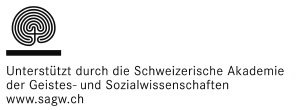Who Is (Held) Responsible for Diabetes and Depression?
A Qualitative Interview Study Exploring Attributions and Reactions to Social Network Responsibility Frames
DOI:
https://doi.org/10.47368/ejhc.2023.103Keywords:
responsibility framing, depression, diabetes mellitus, attibutions, health-related stigmaAbstract
Responsibility frames and attributions of responsibility are closely linked to health-related stigma and social support intentions, which present relevant influencing factors for health outcomes. According to social-ecological models, health responsibility can potentially be attributed to at least three levels: 1) the individual, 2) the social network, and 3) society. So far, little is known about responsibility attributions to the social network. This qualitative interview study explores how N = 22 persons with and without lived experience with diabetes and depression react to a media frame attributing responsibility to the social network level, aiming to understand how framing and responsibility attributions are linked to health-related stigma and endorsement of social support. Results demonstrate that specifically type 2 diabetes is linked to individually controllable attributions and behavioural stigma, and individuals living with type 2 diabetes are expected to manage their condition without considerable social support. In contrast, depression is seen as less controllable, less manageable, and dependent on social and professional support. For both diabetes and depression, frames attributing responsibility to the social network may stimulate social support but also carry certain risks. These results offer implications for health news reporting, and perspectives for further research on health-related responsibility framing.
Downloads
Additional Files
Published
How to Cite
Issue
Section
License
Copyright (c) 2023 Linn Julia Temmann

This work is licensed under a Creative Commons Attribution 4.0 International License.
The authors agree to the following license and copyright agreement:
a. Authors retain copyright in their work.
b. Authors grant the European Journal of Health Communication the right of first publication online on the internet (on the publication platform HOPE of the Main Library of the University of Zurich).
c. The electronic contributions on the internet are distributed under the „Creative Commons Attribution 4.0 International“- License (CC BY 4.0). This license allows others to copy and redistribute the work in any medium or format, to remix, transform and build upon the material with an acknowledgement of the work's authorship and initial publication in the European Journal of Health Communication . These conditions are irrevocable. The full text of the license may be read under http://creativecommons.org/licenses/by/4.0/.
d. Authors are able to enter into separate, additional contractual arrangements for the non-exclusive distribution of their work, as long as the conditions of the CC BY 4.0 License are fulfilled and initial publication in the European Journal of Health Communication is acknowledged.
e. Authors grant the Editors commercial rights, using a publishing house, to produce hardcopy volumes of the journal for sale to libraries and individuals, as well as to integrate the manuscript, its title, and its abstract in databases, abstracting and indexing services, and other similar information services.
f. This agreement is subject to possible legal disclosure obligations.
g. This agreement is governed by Swiss law. Court of jurisdiction is Zürich.









